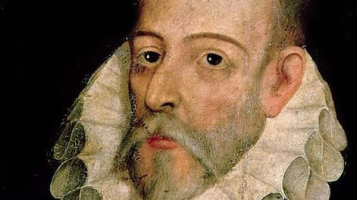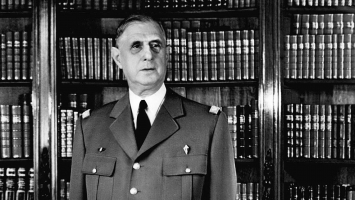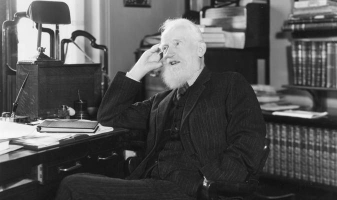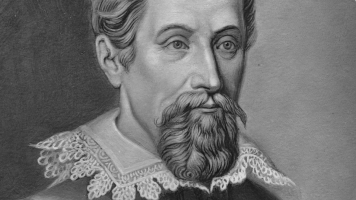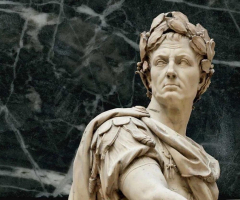Top 10 Interesting Facts About Marquis de Lafayette
The Marquis de Lafayette is revered as a hero in two different nations and continents. He fought with the patriots and the Founding Fathers to secure American ... read more...freedom during the American Revolution. He later worked to overthrow the Ancien Regime and usher in freedom and democracy in France during the French Revolution. 10 interesting facts about Marquis de Lafayette will teach you more about this remarkable man.
-
The second of the Duke and Duchess d'Alene's five daughters, Adrienne de Noailles was born in Paris in 1760. The duke started seeking for suitable partners for his daughters in 1772, and Lafayette seemed like a decent match for Marie Adrienne Francoise. Based on the age difference between Lafayette and Marie, the duke's wife disapproved. Particularly, Marie was just 12 years old and Lafayette had just turned 14. Nevertheless, she agreed that they appeared to be a good fit for one another and worked out a plan with her husband. They managed to arrange regular, informal meetings for Lafayette and Marie while also keeping their engagement a secret. This provided them many opportunities to get to know one another and even develop romantic feelings.
She married Gilbert du Motier Marquis de Lafayette, a wealthy and titled orphan who was 16 years old at the time, five months after turning 14, after having been engaged to him for years. The early years of their marriage were spent in the opulent Hôtel de Noailles, where Adrienne had spent her childhood due to a condition added into the marriage contract that required the pair to remain with Adrienne's parents until they were old enough to have their own home. They were able to have four children together after getting married in 1774 however Henriette, one of the children passed away in infancy. Around 1807, Adrienne experienced a relapse of the fever and arm and leg swelling-accompanied sickness that initially struck her at Olmütz and was only described as "a breakdown of the blood." On Christmas Eve in 1807, Madame de Lafayette passed away.
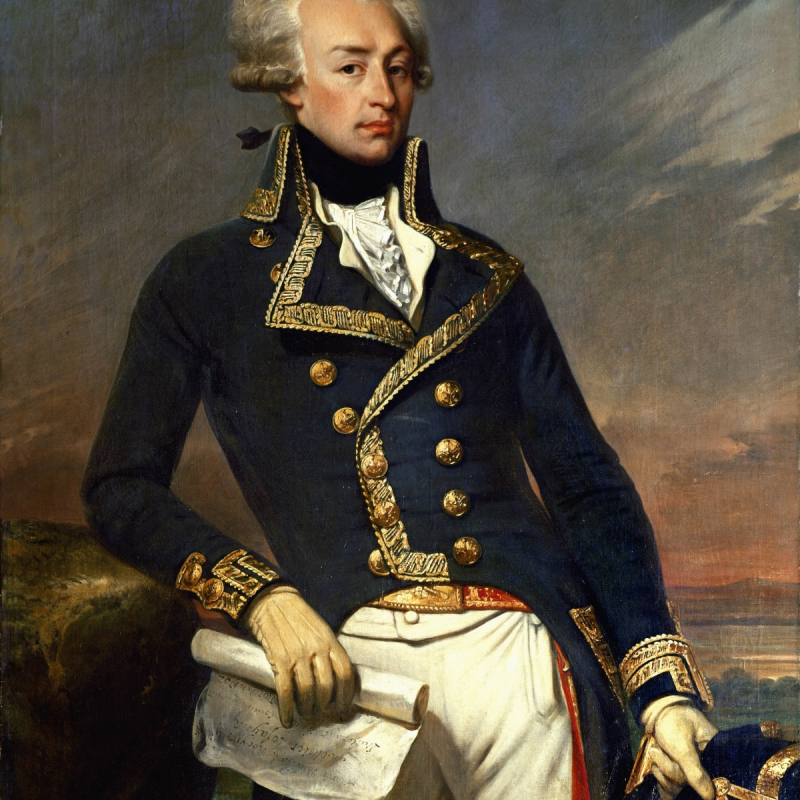
www.history.com 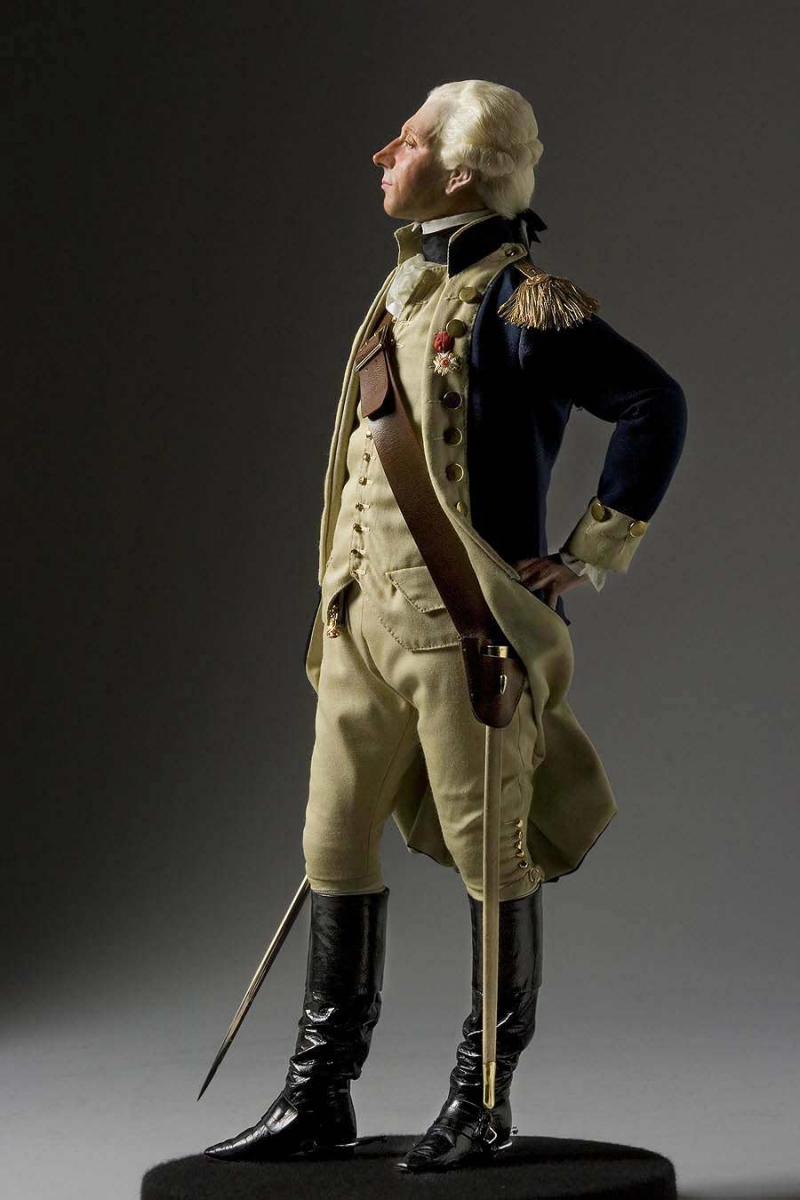
www.history.com -
At the court of King Louis XVI, Lafayette joined the group of young courtiers but quickly had aspirations of becoming a hero as a soldier. Lafayette went to the New World to fight as a volunteer because he didn't want to wait for his nation to get involved in the expanding conflict there. As a result, he made his way to the American colonies and arrived in Philadelphia in July 1777, 27 months after the American Revolution started. He left France on a ship loaded with guns for the Continental Army despite King Louis' orders for him to stay in France. Before to America, Lafayette had never stepped foot on a battlefield. He presented himself to George Washington a few weeks before turning 20 and offered his unpaid service to the revolt.
One of the interesting facts about Marquis de Lafayette is he was named a major general in the Continental Army despite having no combat experience, and he rapidly made a lifelong connection with the country's supreme leader, George Washington. The orphaned nobleman and the childless general looked like an unusual couple, yet they soon formed a surrogate father-son bond. Lafayette stood out from the many colorful European warriors of fortune and idealists that joined the Continental Army to fight for American freedom, including Frederick William, Freiherr von Steuben, of Prussia, Tadeusz Kosciuszko, and Kazimierz Pulaski, of Poland. Washington was more impressed with the young Frenchman as he was exposed to him, and their relationship grew. After being promoted to major general, he soon took command of the forces at the Battle of Brandywine. Later, while waiting for Washington and Rochambeau, he oversaw Continental soldiers in Virginia and contained Lord Cornwallis at Yorktown.
Lafayette was wounded in the calf on September 11, 1777, at the Battle of Brandywine, close to Philadelphia. Refusing treatment, the military newbie organized a retreat while was wounded. On May 28, 1778, he led a skillful and successful withdrawal from Barren Hill. For six weeks, Lafayette worked on Washington's staff. After fighting honorably at the Battle of the Brandywine, Lafayette was given leadership of his division for the first time.
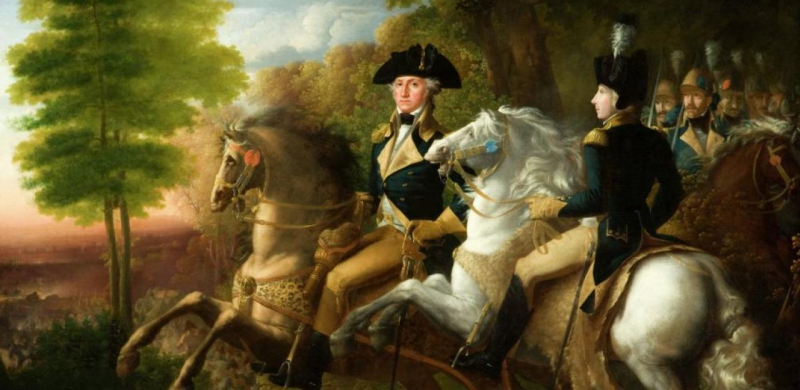
The Battle of Brandywine -- www.battlefields.org 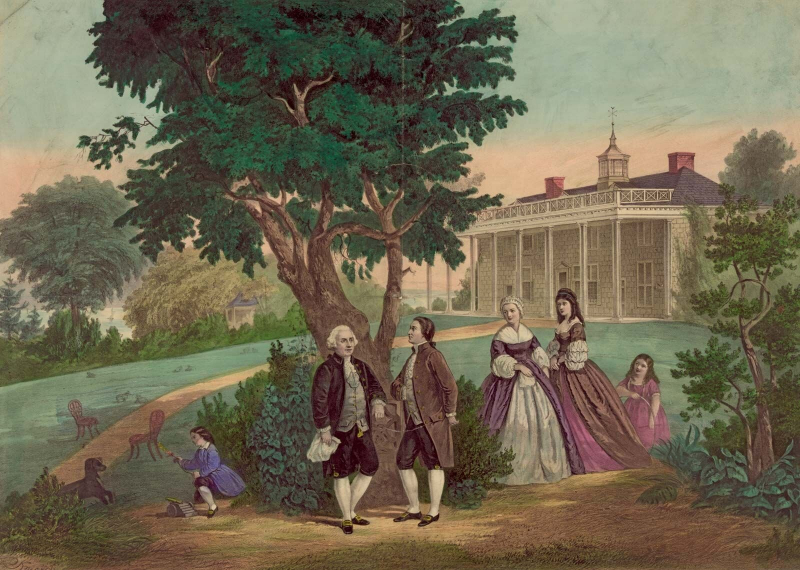
Lafayette and George Washington -- www.battlefields.org -
When he returned to France in February 1779, he collaborated with American envoys Benjamin Franklin and John Adams to assist convince Louis XVI's administration to send more troops and supplies to support the colonies. Six ships of the line and 6,000 infantry soldiers under the leadership of the Comte de Rochambeau were on their way from France when Lafayette returned to America in April 1780. He was assigned leadership of an army in Virginia, and in 1781 he carried out hit-and-run attacks on Benedict Arnold's soldiers. Lafayette harassed Lord Charles Cornwallis across Virginia with the help of Gen. "Mad" Anthony Wayne and military soldiers led by Steuben until trapping him at Yorktown in late July. On October 19, Cornwallis submitted to the American and French soldiers who had entered the siege. British cause was defeated.
Lafayette went back to France as an American ambassador in 1781 following the British capitulation at Yorktown to bolster French support for the American cause. The French royalty and nobility had an idealistic picture of the revolution even though America had a republican government. Lafayette was knighted as a member of the Order of Saint Louis as a result and was given a hero's welcome upon his return to France. Lafayette later took part in American and British-led peace negotiations that resulted in the Treaty of Paris, which was signed in 1783. Additionally, he took engaged in talks between France and the US about post-war trade deals.
In 1785, Lafayette ultimately made his way back to the US, where he was welcomed back as a hero. He and all of his offspring were made citizens of Maryland specifically, which also made them US citizens by the new US Constitution. Lafayette subsequently said that since he only acquired French citizenship after the French Revolution, he became a citizen of the United States first.
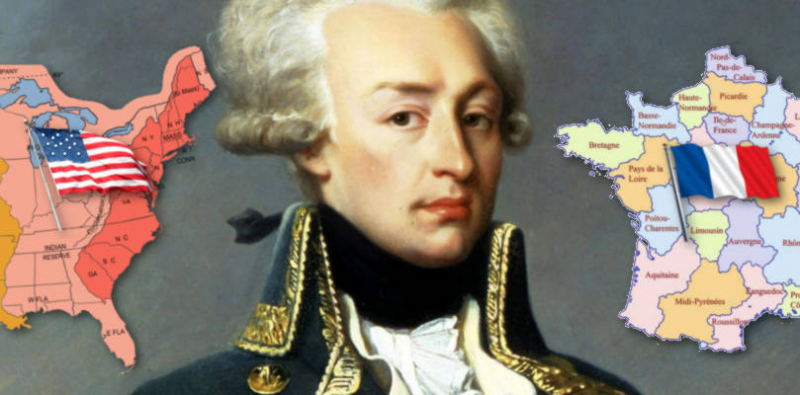
www.history.com 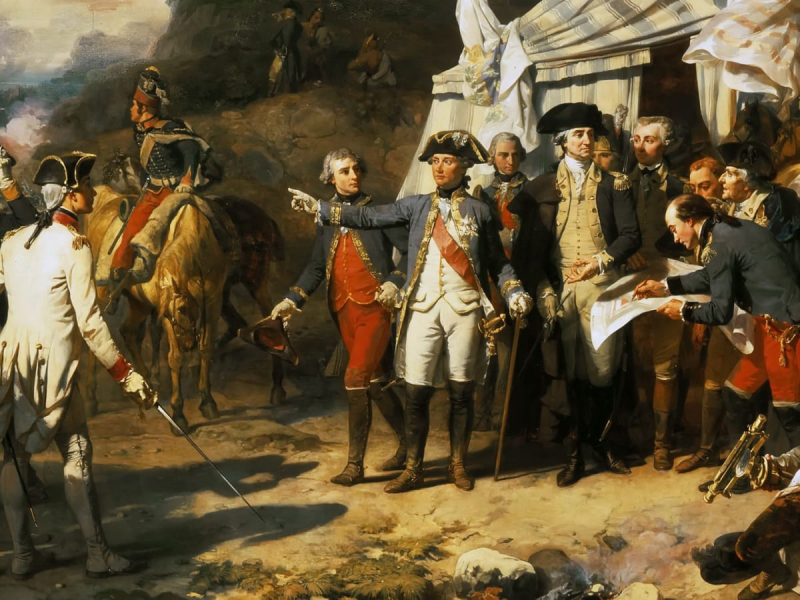
Battle of Yorktown -- www.history.com -
Lafayette rose to prominence among the liberal aristocracy (also known as the Fayettistes) during the following five years as a vocal supporter of religious tolerance and the abolishment of the slave trade. Lafayette was a republican at heart, but he continued to be an aristocrat with close ties to numerous members of the governing royal family. Thomas Jefferson, a friend of Layfayette's, predicted that despite his conflict between those two worlds, Layfayette's strong republican sympathies would prevail.
Ironically, Lafayette performed this duty in his capacity as a member of the Second Estate, or French aristocracy. The Estates-General, France's pre-revolutionary parliament, had been convened by King Louis XVI in 1789. The Estates-General typically voted in groups rather than individually. With the help of the church, or the First Estate, the commoners, or Third Estate, sought to change that. Lafayette backed the commoners' agenda while the majority of nobility objected.
The king decided to close the Estates-General on June 20 as a result. Instead, at a neighboring tennis court, the delegates reconvened as the National Assembly. They took the Tennis Court Oath there, promising to stick together until France had a constitution. With the assistance of Thomas Jefferson, the Declaration of Independence's primary architect, the marquis produced one of history's most significant texts regarding human and civil rights, inspired by the ideals of the American Revolution. On August 27, 1789, the Declaration of Human and Citizen Rights was approved by the National Assembly following considerable changes. Lafayette had been chosen as the head of Paris' newly organized national guard on July 15, which is considered one of the interesting facts about Marquis de Lafayette.
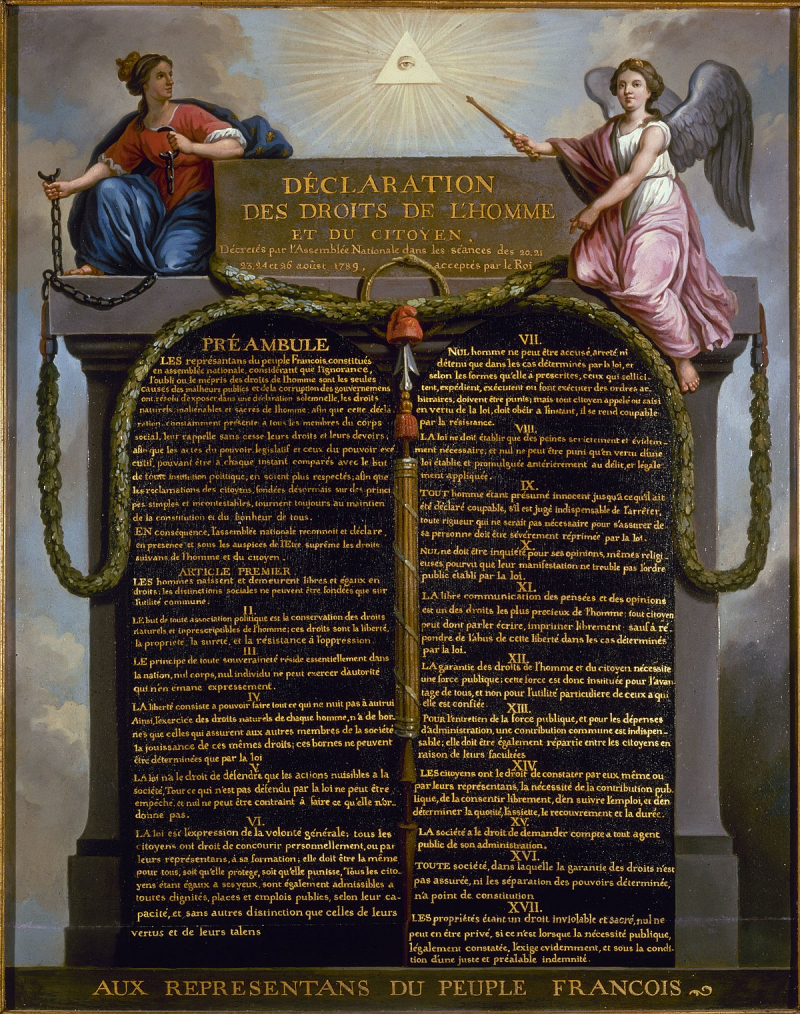
Declaration of the Rights of Man and of the Citizen -- en.wikipedia.org 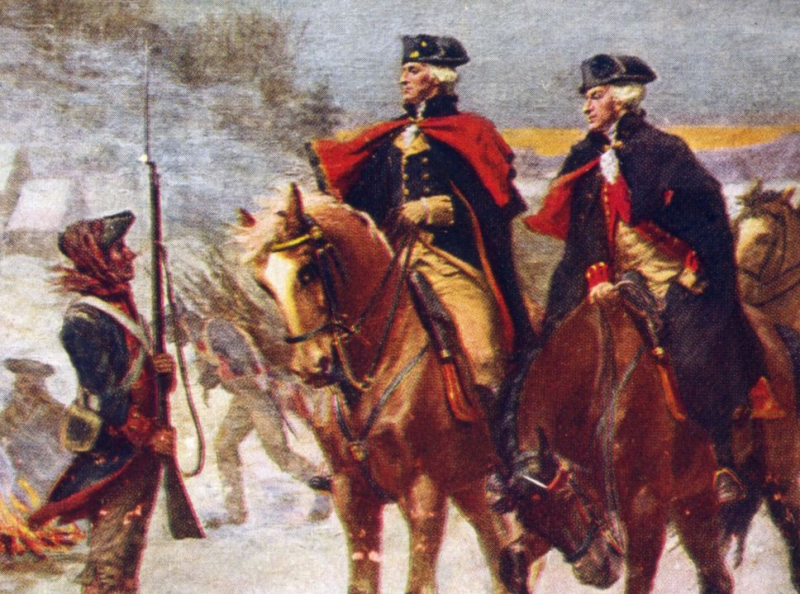
www.history.com -
On October 2, King Louis XVI rejected the Declaration of Human and Citizen Rights, which sparked a women's march from Paris to the Palace of Versailles. On October 6, a mob attacked Versailles, and his forces rescued Louis XVI and Queen Marie-Antoinette from their wrath. Lafayette subsequently transported the royal family to Paris, where they were taken prisoner by the revolution. To maintain calm, Lafayette led his troops after them. At Versailles, the people greeted them with mixed emotions, cheering the monarch but threatening Queen Marie Antoinette with death. Lafayette eventually conducted the royal family back to Paris in peace after treating the queen with respect.
Lafayette proceeded to Vincennes on February 28, 1791, or "Day of the Daggers," to prevent the rebels from damaging Vincennes Castle, which served as a jail just like the Bastille. At the same time, the nobility went to the Tuileries Palace equipped with daggers and pistols out of concern for King Louis XVI's safety. La Fayette disarmed the aristocrats and swiftly returned to Paris. Lafayette intended to retire after quelling a second uprising in April 1791, but his resignation was rejected, therefore he was forced to stay in government.
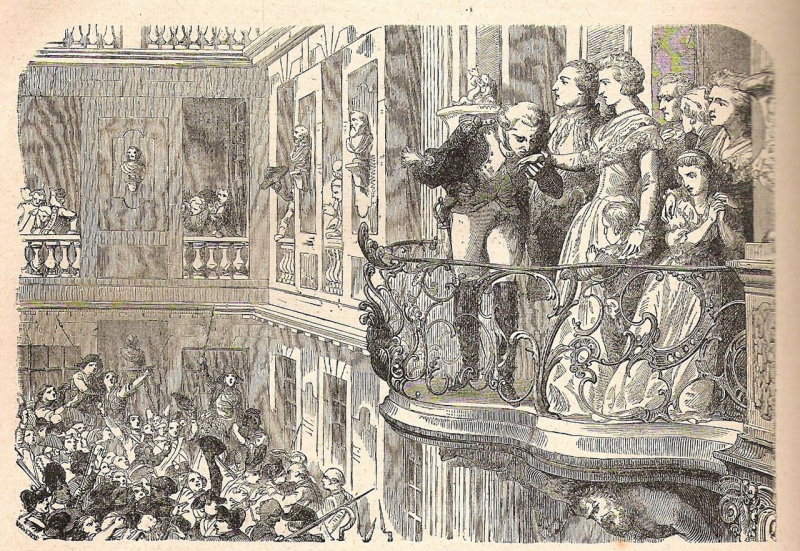
www.britannica.com 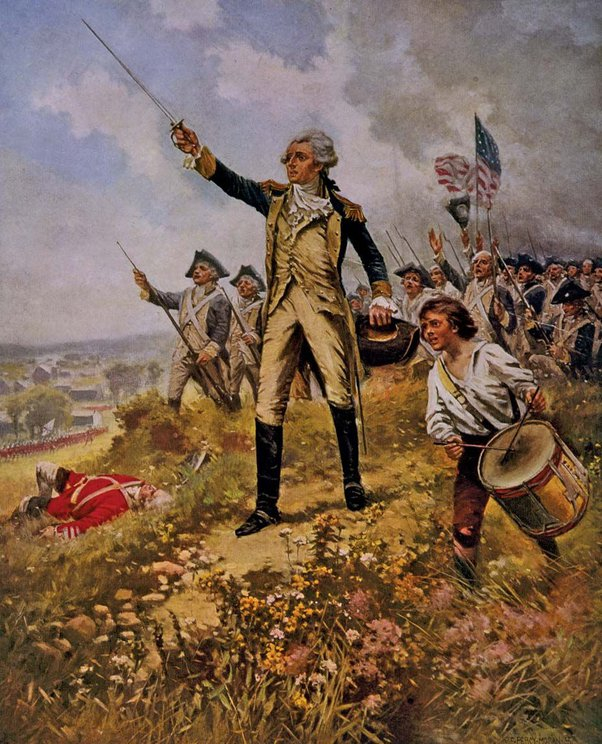
www.britannica.com -
For the next year, Lafayette’s popularity and influence were at their height. He supported measures that transferred power from the aristocracy to the bourgeoisie, but he feared that further democratization would encourage the lower classes to attack property rights. On June 20, 1791, the royal family fled to Austria after becoming captives in their palace as a result of the French government's rising radicalism. Although they were apprehended by the National Guard in Varennes, the government-held Lafayette responsible for their first escape. Lafayette also had a stronger distaste for the revolution's radicalism. In particular, his support for the rule of law diverged more and more from the revolution's crowd mentality.
The Jacobin club planned a rally on July 17 on the Champ-de-Mars square to overthrow the king and establish a republic. Lafayette and Bailly arrived with soldiers and gave the order for the throng to disperse. The demonstrators disobeyed, made fun of, and assaulted with stones and bricks. The Guardsmen retaliated by firing cannon volleys into the air. When a gunshot was fired at La Fayette from among the crowd, chaos broke out. Bailly instructed the soldiers to fire. The Champs de Mars Massacre claimed the lives of about 50 petitioners. In retaliation, the mob broke into Lafayette's home and threatened his wife. His reputation was severely tarnished as a result of the incident, and he left the guard in October.
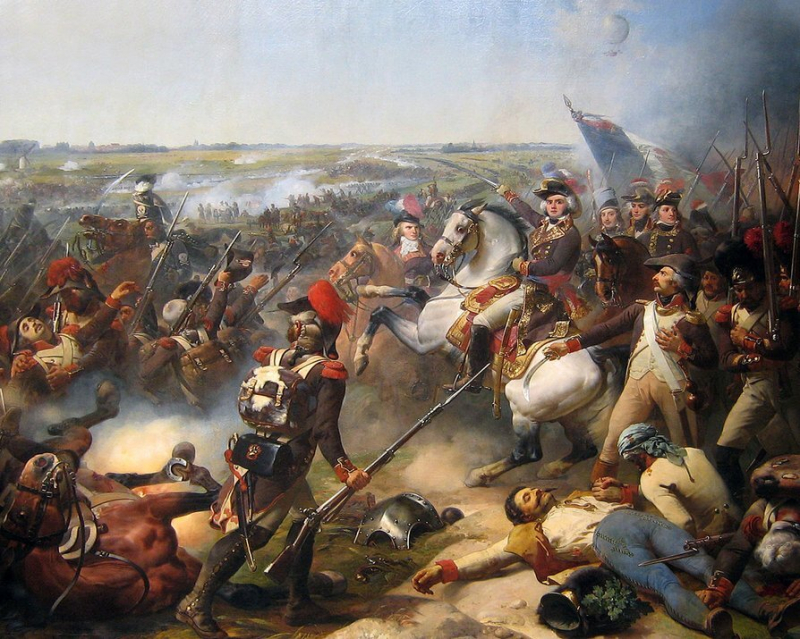
www.sutori.com Alpha History-youtube.com -
One of the interesting facts about Marquis de Lafayette is his family joined him in prison in 1795. In April 1792, war broke out between France and the nations of Austria and Prussia. When Lafayette discovered the French Army was supporting the extreme turn in the French Revolution, he quickly resigned from his military leadership. Lafayette was charged with treason after criticizing this revolutionary development in public. Following a few weeks of rebel attacks on the royal family, La Fayette dispatched her warriors to Paris to defend them. Empress Marie Antoinette declined out of dread for La Fayette. As the Oversight Committee and the Jacobin faction gained strength, La Fayette went back to Metz. The Jacobins requested that La Fayette renounce his post as head of the National Guard and return to Paris after he rejected an offer to become president in exchange for his betrayal of the monarch. La Fayette was accused of treason and given an absentee sentence on August 19 as a result of his efforts in favor of and defense of the monarch.
He decided to seek asylum in the United States after realizing that he would be executed if he went back. Lafayette to sail to the US by crossing through the Netherlands and then across England. However, La Fayette's attempt to flee was unsuccessful, and he was eventually apprehended by the Austrians in the Dutch Republic and imprisoned at Wesel, Kingdom of Prussia. Instead, Prussian soldiers detained him and then turned him over to the Austrians, who put him in jail. Other European royals were worried that Lafayette might start additional revolutions if he was allowed to remain free because of the public's understanding of his participation in the American and French revolutions. However, thanks to American diplomatic assistance, Lafayette was able to find decent lodging in prison. Adrienne moved to Austria with her two adult daughters, Anastasie and Virginie, while her son George had gone to the United States. Adrienne went to Vienna to desire to live with La Fayette, who was being held with the emperor Franz II. When she arrived at the jail in Olmütz, she was granted permission to reside with her husband in his claustrophobic and undeveloped prison barracks.
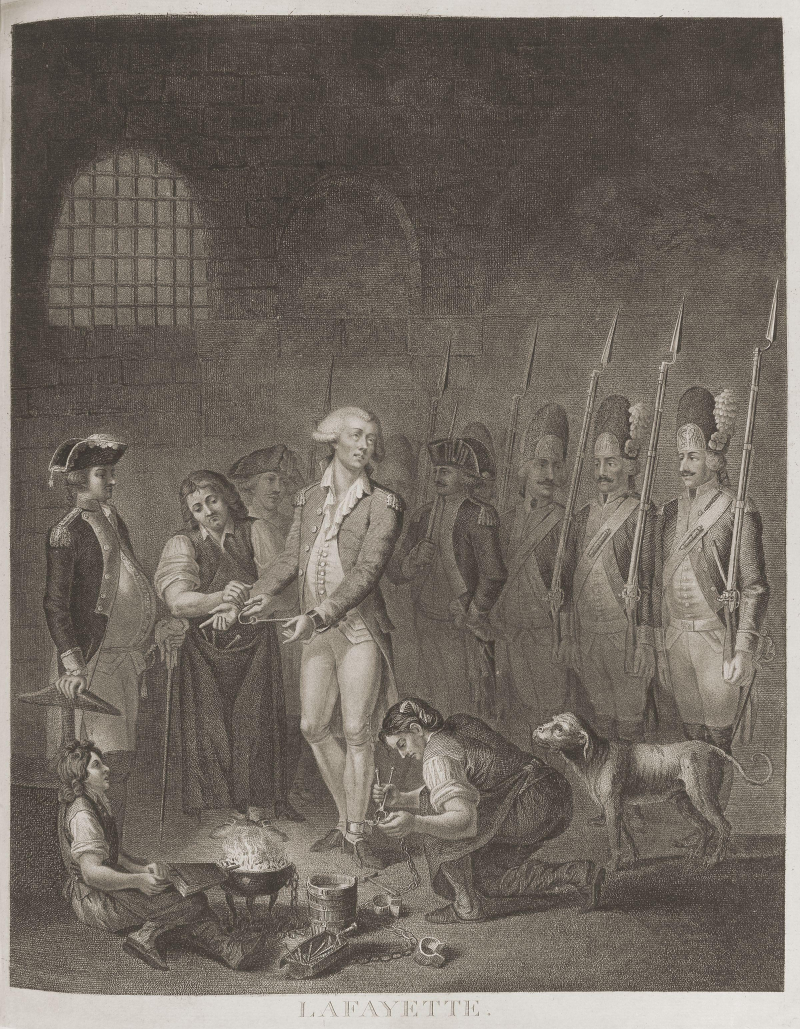
He and his family reunited in prison -- commons.wikimedia.org 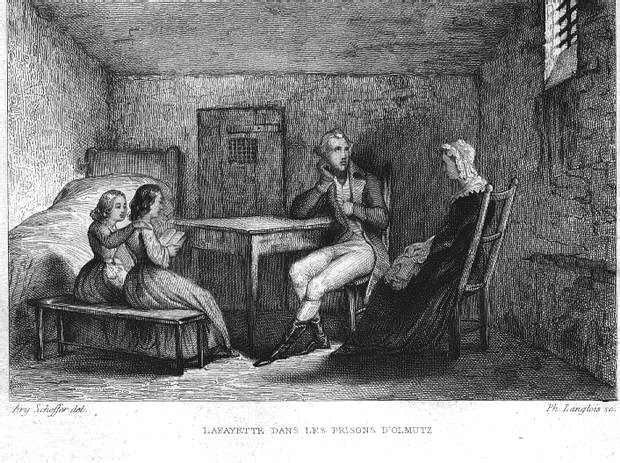
He and his family reunited in prison -- commons.wikimedia.org -
On the one hand, Lafayette and his family's escape from jail were thanks in part to Napoleon and his administration, the Directorate. On the other hand, they would not let Lafayette travel back to France until he had sworn fealty to the new regime. Lafayette was compelled to remain in exile in Germany until 1799 because he refused. He came back to France that year under a fictitious name. Napoleon was angered by this but was unable to punish him without upsetting the public. Lafayette, who kept a low profile throughout the Napoleonic Wars, was instead marginalized by Napoleon.
Surprisingly, Lafayette dissented from the new limitations on French democracy following Napoleon's first defeat in 1814 and did not support Louis XVIII. He afterward took retirement from public life in part as a form of protest against Napoleon Bonaparte's autocratic rule, and he went on to become a gentleman farmer. Lafayette rebuffed Jefferson's invitation to appoint him as governor of the recently acquired Louisiana Territory in 1803 when Jefferson was still the president of the United States. He was a member of the Chamber of Deputies throughout the majority of King Louis XVIII's reign (1814–24). Lafayette, however, rose to prominence during Napoleon's brief ascent to power and subsequent collapse in 1815, calling for his resignation and exile. Lafayette attempted to arrange for Napoleon to be granted refuge in the US, but his plans fell through due to British pressure.
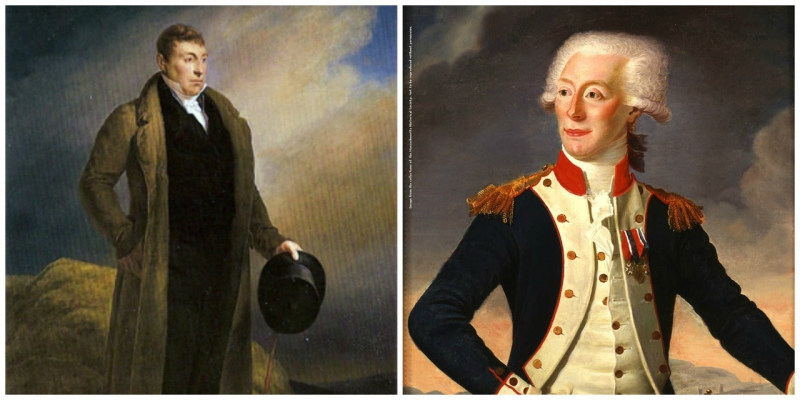
Lafayette and Napoleon -- www.history.com 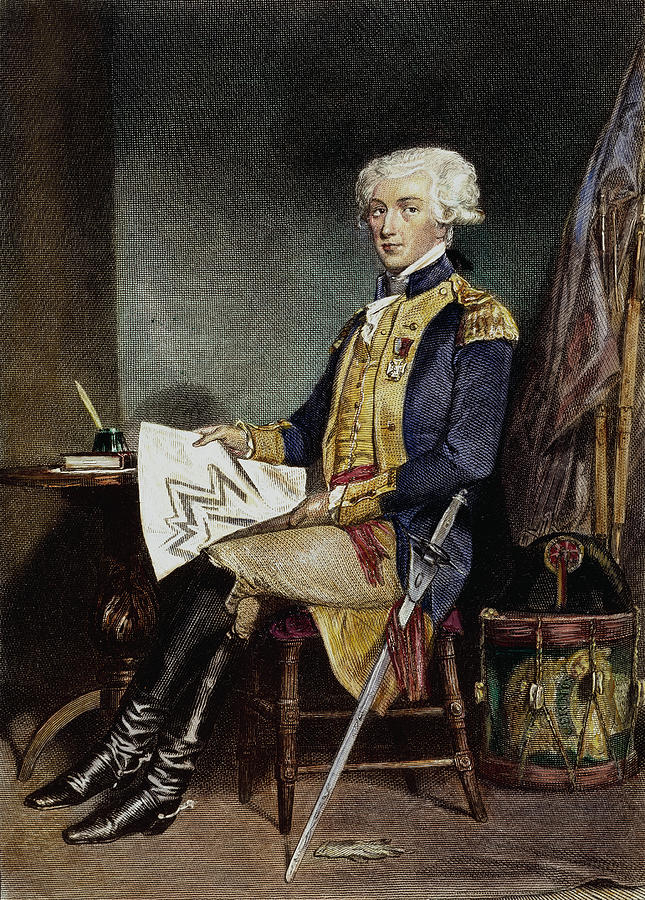
www.history.com -
Lafayette accepted President James Monroe's offer to travel to the United States in 1824 and was warmly welcomed. In August, Lafayette landed in New York and was greeted by veterans of the American Revolution. James Monroe, the president of the United States, personally welcomed him to the White House in Washington, D.C. Besides, he was welcomed by large crowds and praised in towns all around the country. Celebrations continued for the next four days and nights, as they did when Lafayette arrived in Boston and Philadelphia. He was frequently asked to lay the foundation stone for the several memorial buildings that were inspired by his arrival in the US.
Lafayette had also intended to visit the original 13 states, but due to the size of his welcome, he ended up traveling to all 24 states. Washington's burial and Monticello, where the ill 81-year-old Jefferson praised and honored his old buddy, were among the poignant visits made during the visit. On December 10, 1824, Lafayette delivered the first speech by a non-American before the House of Representatives. Numerous communities across the nation were named in his honor as a direct result of that trip and the patriotic fervor it sparked. Additionally, the US Congress decided to give him a $200,000 reward as recognition for his assistance with the American Revolution. Finally, in September 1825, he made his way back to France.
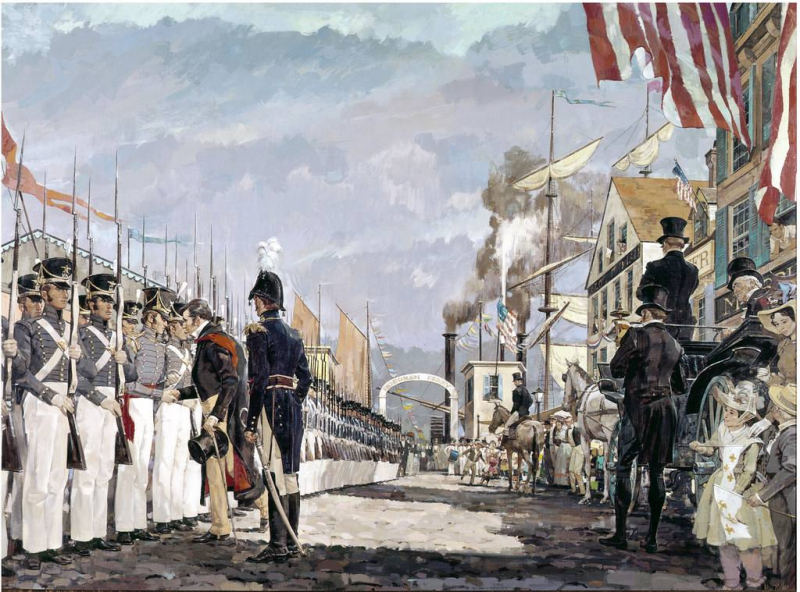
The Marquis de Lafayette's Triumphant Tour of America -- www.thoughtco.com 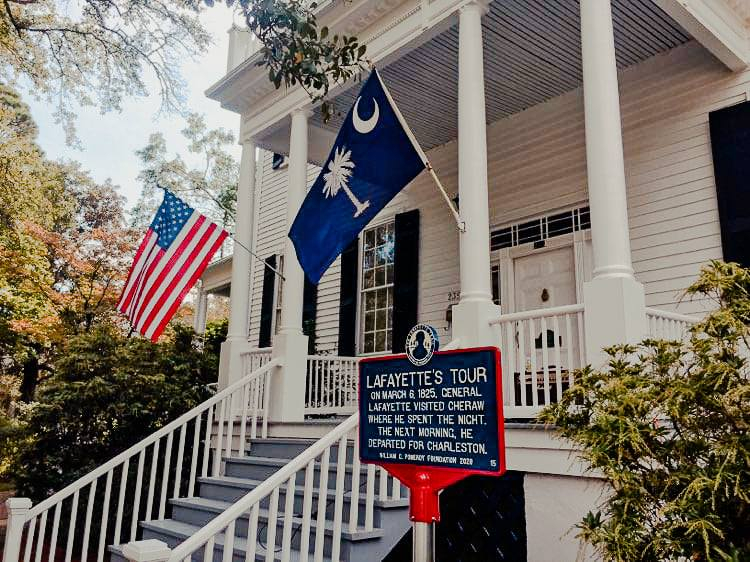
atlanta.consulfrance.org -
After a protracted illness with pneumonia that he contracted after having to walk in the rain, he passed away in 1834. A large group of legislators, academics, government and military leaders, National Guard personnel, and ex-pats in Paris carried his casket to the church of Assumption to say goodbye. On May 22, La Fayette was interred beside his wife at Picpus Cemetery with parcels of soil brought back from Bunker Hill, Massachusetts. After Lafayette passed away, his political rival King Louis-Philippe gave him a military burial, which justified excluding the general public. Widespread protests against the king resulted from this.
In contrast, Lafayette was given a state burial by US President Andrew Jackson that was on par with one for another US President. President Jackson purposefully modeled Lafayette's US burial rites after those given to George Washington, the country's first president. At that time, US Congressmen had the Capitol covered in black for a month as a sign of grief. Other Americans likewise showed public grief. John Quincy Adams, a former US president, even delivered a 3-hour eulogy for Lafayette.
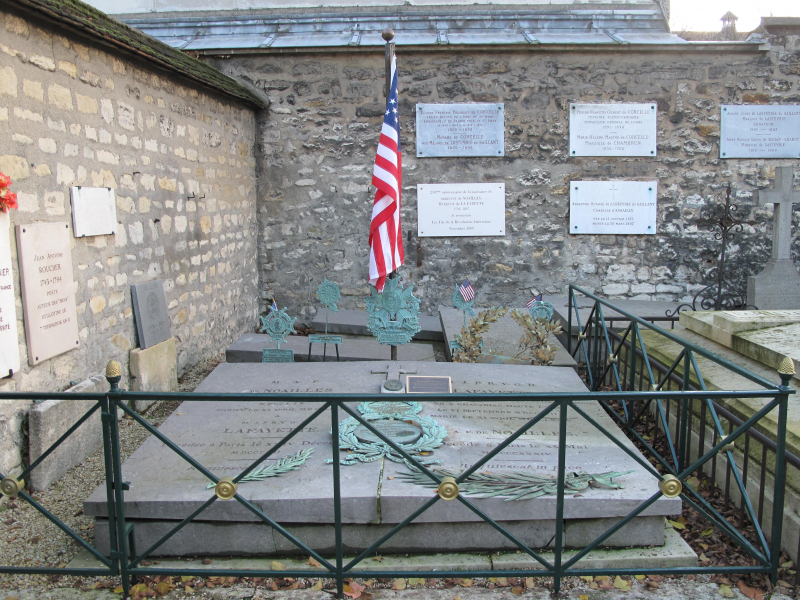
en.wikipedia.org -- Lafayette’s grave in the Picpus cemetery, Paris 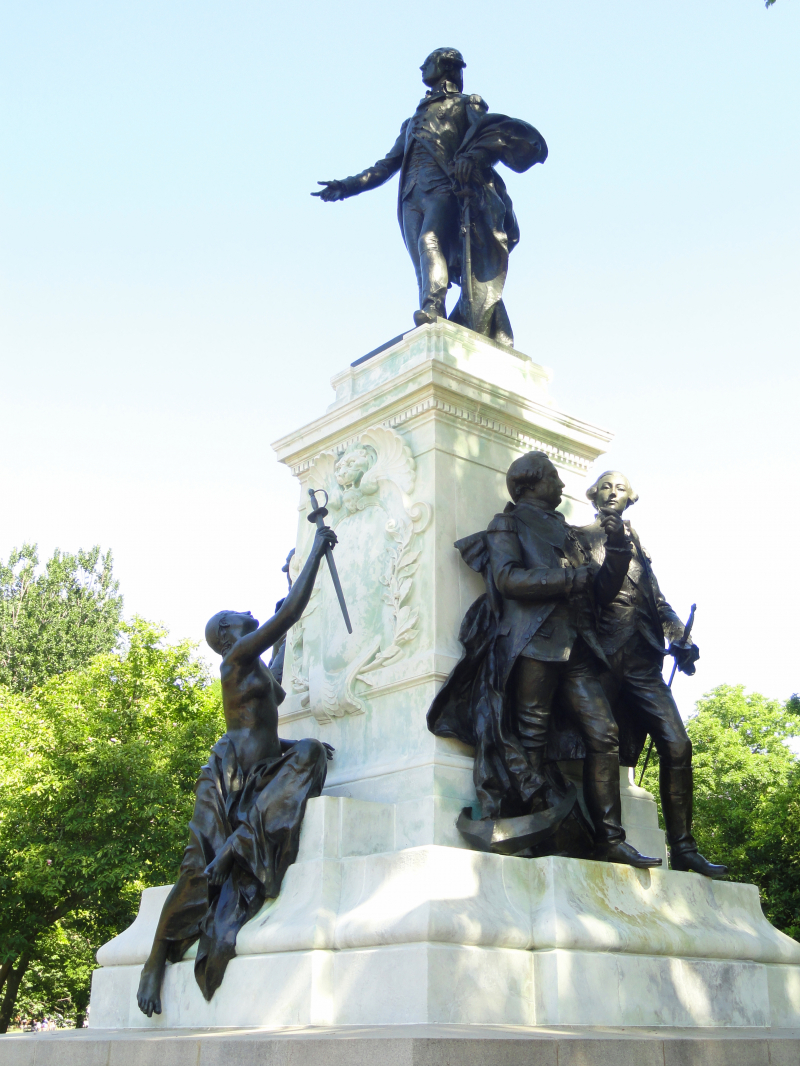
General Lafayette Statue (U.S. National Park Service) -- www.nps.gov












